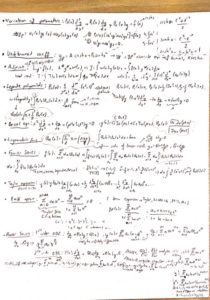Ok, it’s my ignorance. History time ! Year: 2004 Location: The University of Manchester Nobel Physics: 2010
Here is the whole story and information from ‘the home of graphene‘, Manchester.
Ok, it’s my ignorance. History time ! Year: 2004 Location: The University of Manchester Nobel Physics: 2010
Here is the whole story and information from ‘the home of graphene‘, Manchester.
Here is a provocative paper recently published. I will add my thoughts when I’m done with reading. UPDATE!!! See my whole paper touching this topic: Faster better cheaper publications

http://journals.sagepub.com/doi/abs/10.1177/0306312718772086
It was a really dense conference. Mostly, the professors gave talks about the latest updates of their research. The discussions were at high level. I tried to keep my eyes open to follow almost every talk 🙂 But, it’s worth it 🙂 Here are the topics attracting my attention.
“Quantum chemistry is the science of understanding the complicated bonds and reactions of molecules using quantum mechanics. The ‘moving parts’ of anything but the most-simple chemical processes are beyond the capacity of the biggest and fastest supercomputers. By modelling and understanding these processes using quantum computers, scientists expect to unlock lower-energy pathways for chemical reactions, allowing the design of new catalysts. This will have huge implications for industries, such as the production of fertilizers.”
Continue reading “Chemical bonds simulated with quantum computers!”
His idea is that an advanced civilization could build a sphere that emits waste radiation in a specific direction. This radiation would accelerate the sphere—and the star it contains—in the opposite direction.”
“Sawtooth swings—up-and-down ripples found in everything from stock prices on Wall Street to ocean waves—occur periodically in the temperature and density of the plasma that fuels fusion reactions in doughnut-shaped facilities called tokamaks. These swings can sometimes combine with other instabilities in the plasma to produce a perfect storm that halts the reactions. However, some plasmas are free of sawtooth gyrations thanks to a mechanism that has long puzzled physicists.”
Wait! What? “The first step in hydrogen storage is chemisorption, wherein gaseous H2 collides with Pd and adsorbs (sticks) to the surface. Secondly, the chemisorbed H atoms diffuse into the sub-surface, several nanometers deep.”
Continue reading “Surface-bound hydrogen: diffusion > desorption”
Boeing and SpaceX will be late for manned flights to ISS
It is always good to have such one throughout the university. This is for AME 60611 Math course. Although I have a terrible handwriting, still it is the best way to remember.






Recent Comments